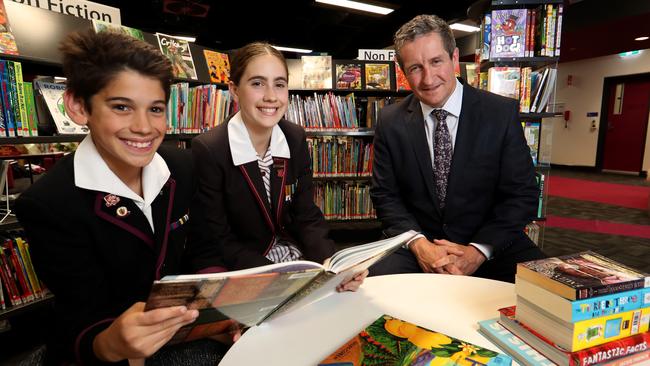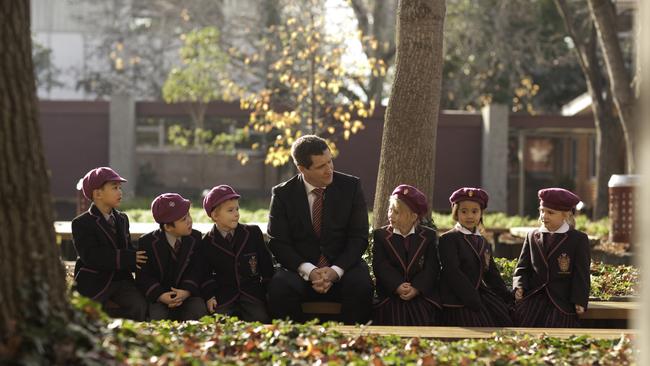How Melbourne’s Haileybury made remote learning work in China
As Victorian pupils move to remote learning next week, Haileybury has a two-month headstart after running a school in coronavirus-inflicted China. These are the lessons the top Melbourne school learnt.
As schools brace for what could be an extended period of remote learning, Melbourne’s Haileybury has had first-hand knowledge through its partnership with a school in China.
Haileybury International School, in the Tianjin outer district of Wuqing, opened in 2013 and has 950 students from grade one to year 12.
As the coronavirus took hold in January, the school started preparing for a shift to remote learning.
The transition came as schools returned after Chinese New Year in mid-February
The school has now been operating in lockdown for eight weeks, Chinese schools are now poised to reopen with the worst of the devastating COVID-19 thought to have passed.
Haileybury principal Derek Scott said there had been insights gained from the experience, especially the need for agility.
The Chinese equivalent of Year 12 exams has been delayed from June to July.
Some students do the VCE, administered by the Victorian Curriculum Assessment Association, which gives them options for tertiary study in Australia.
There is ongoing discussion about how those exams might be done and whether the students will have to sit them later in the year, coinciding with when they would be sat in Victoria.

Haileybury campus is staffed by Chinese teachers with one-quarter drawn from Australia and other western countries.
“Many of the teachers were overseas when the lockdown started,” Mr Scott said.
They had to be set up for remote learning from holidays destinations such as Philippines, Vietnam and Thailand.
Mr Scott said on the ground in China, Peter Rogerson and Yanni Galanis oversaw the remote learning from their respective apartments in lockdown.
Despite Mr Rogerson having a stint in hospital unrelated to the virus, Mr Scott said: “It seems to be have been very successful.”
He said each learning day had to include a range of physical exercise, virtual learning, one-on-one contact, feedback and small group learning.
“I think the key thing is the adaptive expertise of the teachers and the incredible resilience of students to learn in their own home,” Mr Scott said.
“A key learning is that the school has to be able to adapt to the different technology at home.
“It can’t be a one size fits all approach.”
He said building physical activity into every day and having bigger breaks between class were also very important.
“The longer it has gone on, the welfare and the health issues of the students become more important,” he said.

Mr Scott did note that many of the Chinese students had no siblings so they did not have the same distractions at home as some other families might have with more children and strain on bandwidth.
“I think it works best if you have high expectations of your students. Make sure that they are there if they are supposed to be there.”
He said routine, for at least part of the day, was important.
“It is important to understand that they need to do some serious blocks of work each day,” he said.
Mr Scott said as the local school year continued, Victorian students in Year 12 were missing out on many of the rituals of the year, such as formals, collaborative learning, birthdays and going for their driver’s licence.
It was important to try to build in some co-curricular online activities that would honour these rites of passage, he said.
He said in China they were expecting to get two weeks’ notice that the school would re-open.
“We haven’t got an official date as yet but 80 per cent of provinces in China have been told they can re-open. We expect to be open in mid April.”
MORE NEWS
WHAT REMOTE LEARNING MIGHT LOOK LIKE IN VICTORIA
CBC ST KILDA WELCOMES GIRLS IN 2021
